Earrings are the best jewellery that every woman loves to wear. From simple studs to intricate, dangling designs, earrings have evolved in form and meaning over the centuries. But where did earrings come from, why are they loved so much by women? How have they changed over time? Let’s explore some of the best designs for earrings and get to know about its history and evolution.
The Early Beginnings of Earrings
Earrings are with us from the past and till now continuing to be every woman’s favorite, and their origin can be traced back to ancient civilizations. The earliest evidence of earrings dates back to around 2500 BCE, with archeological finds in the Middle East and India. Earrings for women have changed a lot from past to present. We are seeing different trends where simple hoops or studs, made from natural materials like bone, wood, and shells. These early designs were often used for practical reasons, such as securing cloth or hair.
In ancient Egypt, earrings were worn by both men and women. They were symbols of wealth and status, often made from gold and adorned with precious stones. The ancient Egyptians believed that jewellery, including earrings, had spiritual significance and can even protect the person wearing it.
Earrings in Ancient Civilizations
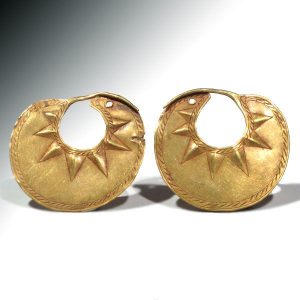
The complexity and symbolism of earrings is different in different eras. In Ancient Greece and Rome, earrings became more elaborate. Greek earrings, often made of gold, were known for their delicate craftsmanship. Roman earrings were larger and more elaborate, sometimes incorporating gems like emeralds, pearls, and amethysts.
In Ancient India, earrings were an important part of religious rituals and cultural traditions. They were made of gold and silver and often included different designs like floral patterns or motifs inspired by nature. Ear piercing is believed to have originated in India.
In Africa, earrings have long been worn as a symbol of identity, culture, and social status. African earrings were made from different materials like clay, ivory, and metals. In some parts of the area it indicates the marital status of women.
The Middle Ages and Renaissance
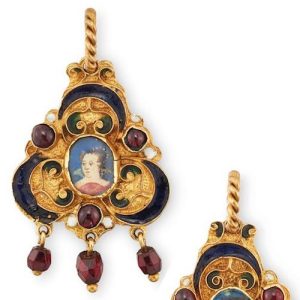
During the Middle Ages, earrings became less common in Europe, especially among the nobility. The focus was more on religious symbols and less on personal adornment. However, earrings made a comeback during the Renaissance, a period known for its lavish fashion and ornate jewelry.
Earrings with gemstones and pearls have different designs . They were worn primarily by women of the upper class, who used jewellery as a way to display their royalness.
The 18th and 19th Centuries Earrings
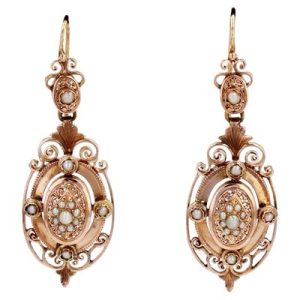
The 18th and 19th centuries marked a period of great change in the world of fashion, and earrings were no exception. In the 1700s, the Rococo period saw the rise of large, ornate earrings, often featuring intricate designs with colorful gemstones and diamonds. These earrings were popular among European aristocrats and were often worn as part of elaborate court ensembles.
In the 19th century, earrings continued to evolve with changing fashion trends. The Victorian era, in particular, saw the introduction of more subtle, romantic designs. The popularity of long, dangling earrings grew during this time, as well as the use of drop earrings with gemstones like garnets and diamonds.
During the late 1800s, the invention of the screw-back earring was a significant innovation, making it easier for people to wear earrings without the need for pierced ears. This was especially important in an era when ear-piercing was not as widespread as it is today.
The 20th Century Modern Fashion
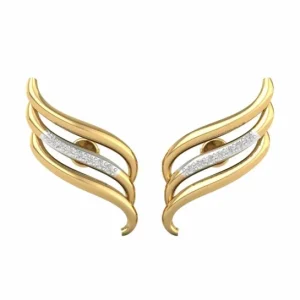
The 20th century saw a dramatic shift in the fashion world, and earrings were no exception. The early 1900s saw the rise of Art Nouveau and Art Deco styles, both of which influenced earring designs. Art Nouveau earrings were known for their flowing, organic shapes, often incorporating motifs like flowers, leaves, and vines. Art Deco earrings, on the other hand, were characterized by bold geometric patterns and the use of precious metals and stones.
In the 1920s, earrings became an essential part of the flapper look. Long, dangling earrings with sparkling stones were a favorite among women who embraced the fashionable, free-spirited style of the Jazz Age. During this time, costume jewelry also became more popular, allowing women of all social classes to wear stylish earrings.
The mid-20th century, particularly the 1950s and 1960s, saw a shift towards more minimalist earring designs. Simple studs and small hoops became the go-to choice for many women. However, bold and statement earrings made a comeback in the 1980s, with oversized designs and vibrant colors dominating the fashion scene. Chunky gold earrings, large hoops, and dramatic statement pieces became a symbol of self-expression during this era.
A Blend of Tradition and Modernity
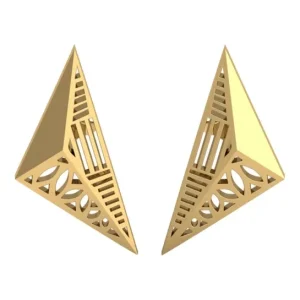
In the 21st century, earrings have continued to evolve, with new materials and innovative designs pushing the boundaries of fashion. Modern earrings come in a variety of styles, from simple and classic to bold and experimental. People are now more likely to experiment with different materials, such as plastic, acrylic, and even wood, in addition to traditional metals and gemstones.
Piercings have also become more diverse. While earlobe piercings remain the most common, many people opt for multiple piercings, including cartilage piercings, helix piercings, and tragus piercings. This has led to an increased interest in stacking earrings, where people wear multiple earrings on the same ear, creating a personalized and unique look.
Earrings today are no longer just about style; they are also about self-expression. Many people choose earrings that reflect their personality, beliefs, or cultural heritage. Whether it’s a pair of hoops, studs, or chandelier earrings, earrings today allow individuals to showcase their creativity and individuality.
The Future of Earrings
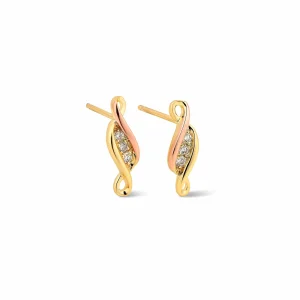
As we look to the future, it’s clear that earrings will continue to evolve. With advancements in technology, we may see earrings that incorporate smart features, like Bluetooth connectivity or LED lights. Sustainable materials may also become more prominent, as consumers become more conscious of their environmental impact.
At the same time, earrings will continue to be an essential part of personal style, crossing cultural boundaries and reflecting the ever-changing trends of the fashion world.
The history and evolution of earrings is a testament to the enduring power of jewelry to reflect the values, styles, and traditions of different cultures and eras. From ancient civilizations to the modern day, earrings have been worn as symbols of status, beauty, and identity. Today, earrings are not just a fashion accessory but a means of self-expression, allowing individuals to showcase their unique personalities and sense of style. Whether simple or extravagant, earrings will always remain a cherished part of our wardrobes and our history.
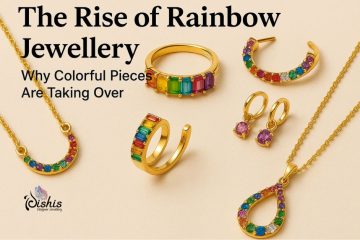

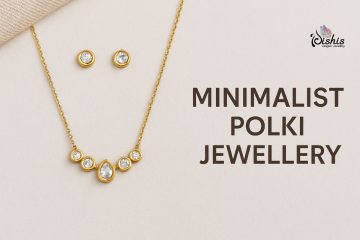
0 Comments